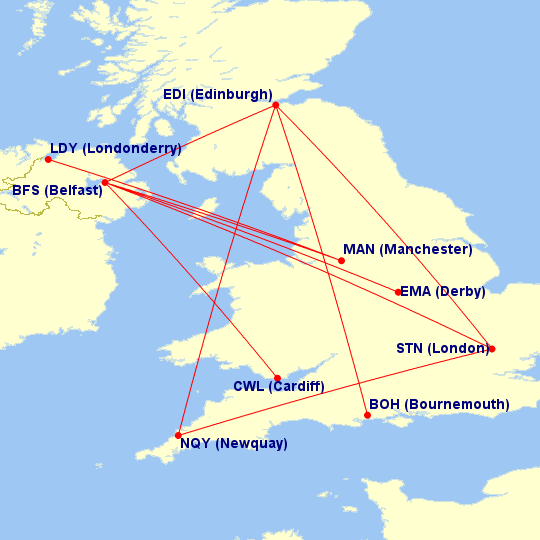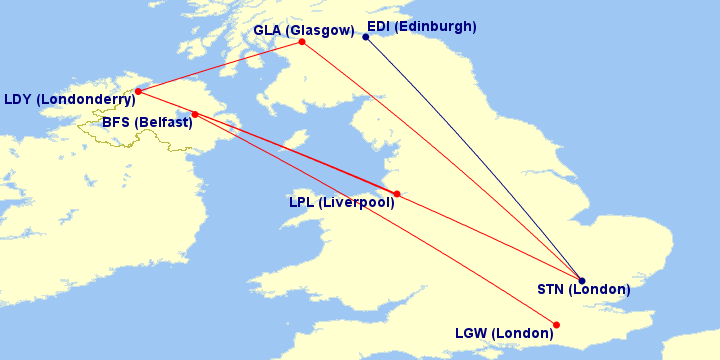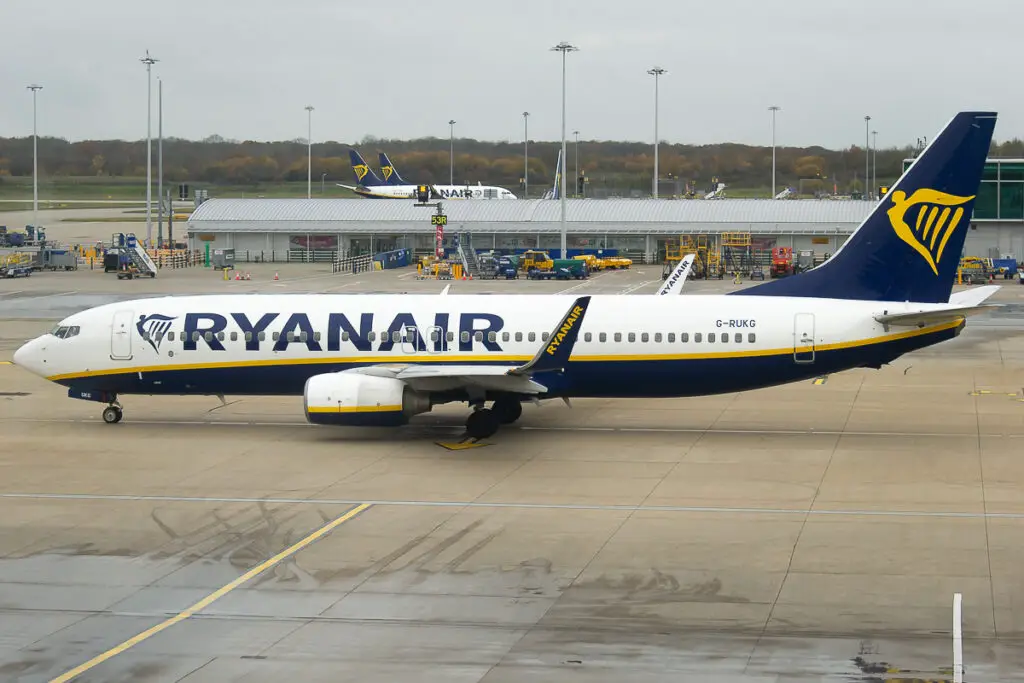Irish ultra low-cost carrier (ULCC) Ryanair is ramping up its domestic operations in the United Kingdom for the next Summer season, with nine new routes opened, from the single existing one last year.
The airline, which is the country’s second-largest airline by seat capacity, has been launching such connections slowly over the previous months, as its executives visit their UK bases to announce its Summer schedules.
Data gathered with Cirium’s Diio Mi application shows that, as of this week, Ryanair plans to operate ten domestic routes in the UK for the third quarter of this year — all shown below. The only one that operated last Summer was the one connecting Derry, Northern Ireland, to Manchester.

According to Cirium, the number of flights, in the third quarter, will be 1,840. Although that number is still subject to change, that would be a 1,635.8% increase over the 106 operations in the same quarter last year.
Such an increase, the airline says, is due to a reduction in the United Kingdom’s Air Passenger Duty (APD) — a tax levied on every passenger departing the country.
Under the new APD rules, effective from April 1st, a new fee band (Domestic) will be created, cutting the rate by half. Effectively, this means that intra-UK passengers will pay GBP6.50, instead of the previous GBP13.
In a press release this week, Ryanair’s Group CEO Michael O’Leary said that «while the halving of APD on domestic flights from [April 2023] has allowed Ryanair to add more domestic routes to our UK schedule for Summer ’23 […] if we are to continue to grow and drive traffic/tourism recovery for the UK, Prime Minister Sunak should immediately scrap APD for all travel and provide incentives for airlines like Ryanair to stimulate growth and recovery for the UK, including London.»
The reduction (or, better yet, its «abolition») of APD has long been a focus of Ryanair’s public relations campaigns in the UK.
Ryanair, however, still served city pairs within the United Kingdom before the COVID-19 pandemic hit. The ULCC’s UK domestic capacity in the third quarter, as per Cirium, peaked in 2016, with 2,675 flights (thus, 2023 should see a 31.2% reduction in frequencies, if no flights are added or cut).
Of the 2016 routes (shown below), only one will remain — the one connecting London/Stansted to Edinburgh, albeit with a 44.9% reduction in flights. The others will not return in 2023, according to the last available schedule.

While one domestic route was operated by Ryanair in 2022 (it returned to the schedule last Summer), the airline dropped most of its internal routes in the United Kingdom in late 2020. Back then, the reason provided for the lack of flexibility in post-Brexit rules.
As an Irish airline, Ryanair has the rights to operate flights between the United Kingdom and the European Union using its EU-registered aircraft (9H-, EI- or SP-), even if such airplanes are based in UK airports. For domestic flights in the UK and from the UK to non-EU countries, however, these rules do not apply.
Ryanair UK, the group’s British AOC, had only one aircraft in the register back then, and the airline claimed it was not worth it to register more for a set of low-frequency rotations in smaller bases. After a compromise between the country’s regulator and the group was not found, the airline decided to keep only one 737-800 in the British registry (G-), based in Stansted, and several flights — even some from the London airport — were cancelled.
The situation now, though, is very different. According to Planespotters.net, Ryanair UK has nine 737-800s. For this Summer, according to the latest schedule in Cirium, the airline will have nine 737 based in Manchester (three), Stansted (three), Belfast (two) and Edinburgh (one). Of these, Belfast and Edinburgh will have fixed Ryanair UK aircraft for the first time.














